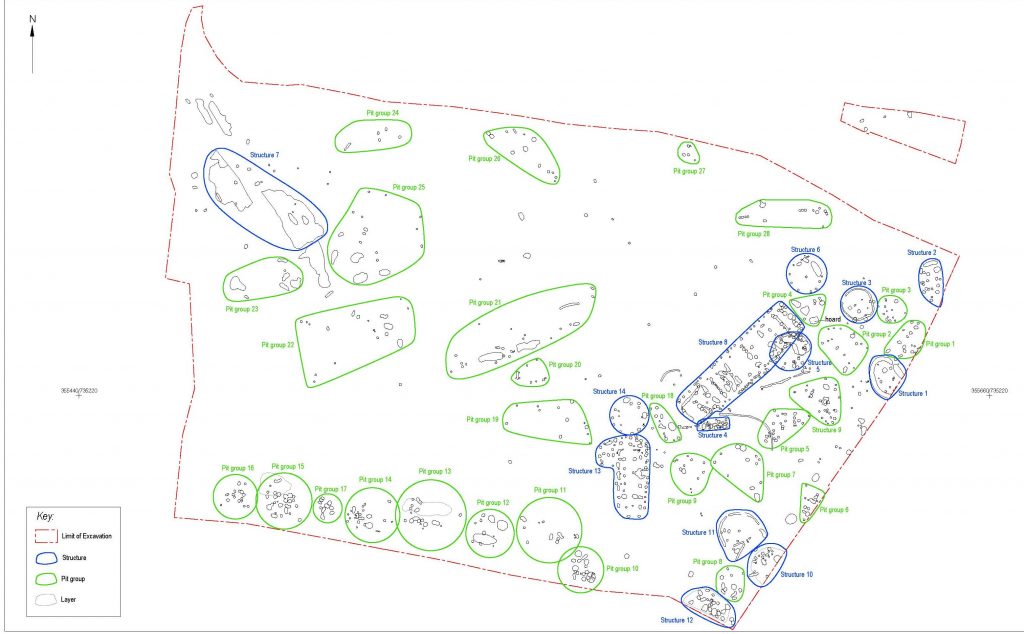So now that we have radiocarbon dating evidence for Early-Mid Neolithic occupation of the larger rectilinear hall (Structure 8) at Carnoustie, what does the latest batch of radiocarbon dates tell us about the context of this settlement?

The other large rectilinear hall (Structure 13) which lies just to the south-west of the larger hall has yielded calibrated radiocarbon dates ranging between 3938-3033 BC, which indicates that it was contemporary with the larger hall and may even have carried on after the larger hall was abandoned.
But perhaps the most surprising aspect to be revealed by the latest batch of radiocarbon dates is that many of the other features have yielded Neolithic dates too. These include structures 10 and 12 that extend beyond the southern corner of the site and the numerous groups of pits that lie to the east and south west of the two Neolithic halls, which have produced calibrated radiocarbon dates from across the fourth millennium BC. So it is clear that the two Neolithic halls lay within a much bigger settlement area.
What’s also apparent from the radiocarbon dates is that the Late Bronze Age settlement contemporary with the hoard lay clustered in that part of the site north-east of the larger hall. But more about this later…
